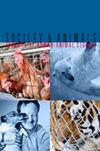Animal Welfare Promotion as a Mechanism of Moral Certification: Microhistorical Evidence From 19th Century Switzerland
IF 1
4区 农林科学
Q4 SOCIOLOGY
引用次数: 0
Abstract
How do nonhuman animal welfare campaigns influence the institutional use of nonhuman animals? This article narrates an episode of nineteenth century history of Geneva, pertaining to the use of nonhuman animals in science, to argue that welfare advocacy is a risky, and indeed sometimes counterproductive, endeavor. In the late nineteenth century, the mainstream Genevan animal welfare group (SGPA) refused to condemn vivisection, and decided to side with Moritz Schiff, a controversial physiologist, provided that he later accepted respecting certain welfare standards in his experiments. The SGPA defended Schiff against the charges of the Genevan abolitionists, and thus provided a metaphorical certificate of “humane treatment” to the vivisector. Behind this moral shield, the laboratory could expand its practices, undisturbed by the need to legitimize them. This episode illustrates the phenomenon of “capture” of the welfarist group by the institutions from which animals are supposed to be protected in the first place.作为道德认证机制的动物福利促进:来自19世纪瑞士的微观历史证据
非人类动物福利运动如何影响非人类动物的机构使用?这篇文章讲述了日内瓦19世纪历史上的一段插曲,涉及在科学中使用非人类动物,认为福利倡导是一项有风险的、有时甚至适得其反的努力。19世纪末,主流的Genevan动物福利组织(SGPA)拒绝谴责活体解剖,并决定站在有争议的生理学家Moritz Schiff一边,前提是他后来接受在实验中尊重某些福利标准。SGPA为希夫辩护,反对Genevan废奴主义者的指控,从而为活体解剖提供了一个隐喻性的“人道待遇”证书。在这种道德保护的背后,实验室可以扩大其实践,不受使其合法化的需要的干扰。这一事件说明了福利主义群体被最初应该保护动物的机构“捕获”的现象。
本文章由计算机程序翻译,如有差异,请以英文原文为准。
求助全文
约1分钟内获得全文
求助全文
来源期刊

Society & Animals
社会科学-兽医学
CiteScore
1.40
自引率
12.50%
发文量
46
审稿时长
>12 weeks
期刊介绍:
Society & Animals publishes studies that describe and analyze our experiences of non-human animals from the perspective of various disciplines within both the Social Sciences (e.g., psychology, sociology, anthropology, political science) and the Humanities (e.g., history, literary criticism).
The journal specifically deals with subjects such as human-animal interactions in various settings (animal cruelty, the therapeutic uses of animals), the applied uses of animals (research, education, medicine and agriculture), the use of animals in popular culture (e.g. dog-fighting, circus, animal companion, animal research), attitudes toward animals as affected by different socializing agencies and strategies, representations of animals in literature, the history of the domestication of animals, the politics of animal welfare, and the constitution of the animal rights movement.
 求助内容:
求助内容: 应助结果提醒方式:
应助结果提醒方式:


